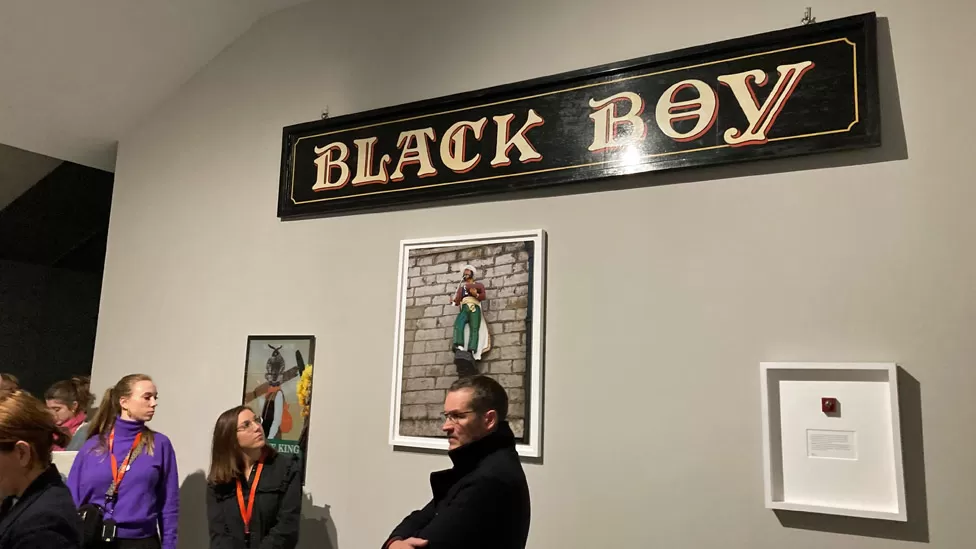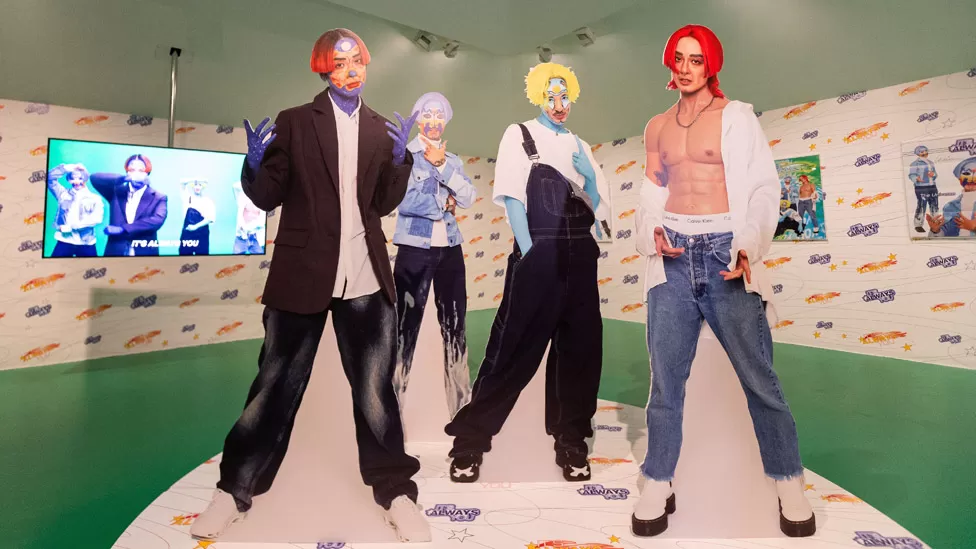The 2022 Turner Prize
The Turner Prize, launched to broaden Tate’s collection of contemporary art works, returns this year to Tate Liverpool. With Tate Britain as its base, a venue outside of London hosts the prize every other year. Running since 1984, the prize is awarded to a British artist for an outstanding exhibition, or other presentations of their work, in the preceding year as determined by an independent jury. The prize values innovation and originality: there is a focus on recent developments rather than a lifetime of achievement. Being open to all media, the diversity of entries is reflected through the shortlisted artists. The materials used range from LED screens to cotton thread, chronicling the issues faced by the modern world.
Heather Phillipson
With the piece titled ‘RUPTURE NO 1: blowtorching the bitten peach, Phillipson draws on chaos and confusion to inform our interpretation of her work. Distorted papier-mâché figures, mountains of salt and rotating sculptures draped in blood-red light makes us wonder if this is a post-apocalyptic world. The immersive installation flits between the familiar and unfamiliar, showing us that, in Phillipson’s words, our ‘ideas, images and the systems that underpin them may be on the verge of collapse’.
Photo Courtesy: BBC
Ingrid Pollard
Pollard’s work Carbon Slowly Turning is a combination of digital photos, kinetic sculptures and textual art. The installation focuses on ‘bodies moving through space’ and highlights the history of common struggle marginalised people face. The collection addresses the cyclical nature of protests, the imperial history that continues to shape Britain, a yearning for the homeland from which one has been displaced, and the representation of a Black identity throughout the landscape of the UK.
Photo Courtesy: BBC
Sin Wai Kin
Their work in the ‘British Art Show 9’ and their solo presentation at Blindspot Gallery, Frieze London explore what society considers the other. Inspired by sci-fi authors such as Ursula LeGuin and Aldous Huxley, Sin Wai Kin uses fantasy narratives to deconstruct the fixed binaries that permeate the construction of gender and sexuality.. In an experimental performance, Sin portrayed four pop singer stereotypes to show how identities are being pigeonholed and commodified.
Photo Courtesy: BBC
Veronica Ryan
Ryan, who spent time at UCL’s Slade School of Fine Art is nominated for her exhibition Along a Spectrum at Spike Island. Much of her work involves reworking organic material like food trays, dried flowers, dust and rubbish, or manufactured objects like scissors, tweezers and old paraphernalia into art. Ryan comments on the mutability of life forms but sees an infinite amount of possibilities in this. The colourful collection reflects a hopeful outlook on mending dislocation, regulating commercial exchange, and navigating the cycle of life and death.
Photo Courtesy: BBC
The Turner Prize invites people from all over the UK to celebrate thought-provoking art pieces, however, the competition’s transparency has historically been imbued with controversy. The neutrality of the prize’s first sponsor (Olivier Prenn) was under doubt because they remained anonymous. Another concern was whether the juror’s interests might be skewed because of personal or commercial reasons. This year, the allegations arise again as three of the six jurors are overseeing the very galleries where the shortlisted shows took place. Despite these concerns, the Turner Prize moves forward in 2022 and continues to be an important name in the art world with many tuning in to see its recipient.





